| Date | Text | |
|---|---|---|
12 Apr 1633

Galileo trial |
Galileo trial In 1633, Galileo Galilei's second trial before the Inquisition began. At its conclusion, his belief that the Earth was not the centre of the Universe was pronounced heretical. |
|
12 Apr 1665

Great Plague of London |
Great Plague of London (medicine) First recorded victim of the 'Great Plague of London' (1665–66), the last major outbreak of bubonic plague in the British Isles. |
|
12 Apr 1748
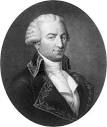
Antoine-Laurent de Jussieu |
birth Antoine-Laurent de Jussieu Born 12 Apr 1748; died 17 Sep 1836 at age 88. French botanist who developed the principles that served as the foundation of a natural system of plant classification. He was born into a family of eminent botanists from Lyons in France. After graduating from the Jardin du Roi in 1770, he continued to work there. He is remembered for introducing a natural classification system that distinguishes relationships between plants relying a large number of characters, unlike the artificial Linnean system, which uses only a few. He distinguished 15 classes and 100 families, of which 76 remain in botanical nomenclature today. His uncles Antoine, Bernard, and Joseph de Jussieu all made important contributions to botany and his son, Adrien, subsequently continued the family tradition. |
|
12 Apr 1748

Antoine Laurent de Jussieu |
birth Antoine Laurent de Jussieu Antoine Laurent de Jussieu, French botanist (died 1836) |
|
12 Apr 1749
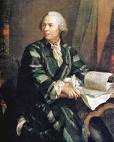
Euler |
Euler (mathematics) Euler produces the first proof of Fermat's theorem on sums of two squares, based on infinite descent. |
|
12 Apr 1749
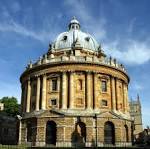
Radcliffe Library |
Radcliffe Library (institutions) Official opening of the Radcliffe Library in Oxford, built under the will of the physician John Radcliffe (died 1714) (although it does not become a primarily science library until 1810). |
|
12 Apr 1758

Antoine de Jussieu |
death Antoine de Jussieu Died 12 Apr 1758 at age 71 (born 6 Jul 1686). French physician and botanist who wrote many papers on human anatomy, zoology, and botany, including one on the flower and fruit of the coffee shrub. |
|
12 Apr 1799
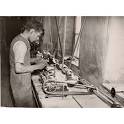
Comb-cutting machine |
Comb-cutting machine In 1799, the first US patent for a comb-cutting machine was issued to Phineas Pratt of Connecticut as a "machine for making combs." He and his son , Abel Pratt, cut the plates with handsaws and the teeth with circular saws operated by a windmill and waterpower at Ivoryton, Conn. Previous manufacturing of combs in the U.S. began with the first commercial scale comb factory by Enoch Noyes of West Newbury, Mass. (1759), who made combs from flattened animal horns. The first U.S. made ivory comb was made at Centerbrook, Conn. (1789) by Andrew Lord, who cut the plate and teeth with a handsaw. |
|
12 Apr 1817
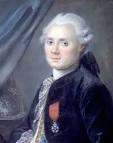
Charles Messier |
death Charles Messier Died 12 Apr 1817 at age 86 (born 26 Jun 1730). French astronomer who discovered 15 comets. He was the first to compile a systematic catalog of "M objects." The Messier Catalogue (1784), containing 103 star clusters, nebulae, and galaxies. (In Messier's time a nebula was a term used to denote any blurry celestial light source.) He established alphanumeric names for the objects (M1, M2, etc.), which notation continues to be used in astronomy today. |
|
12 Apr 1829

Siberia |
Siberia In 1829, the explorer-naturalist Alexander von Humboldt, age 59, began a scientific expedition to uncharted regions of Siberia at the invitation of Tsar Nicholas who also financed the journey. Humboldt crossed Asia, from Russia and Siberia to Mongolia. He recorded temperatures and noted that temperatures varied at the same latitude in accordance with distance from the ocean. As temperature data was collected from a series of Russian weather stations, von Humboldt constructed a world map of temperature, being an early use of isotherms, which he found did not neatly follow latitude. From this he developed the theory of continentality. The expedition ended on 28 Dec 1829. His 3-volume work on Asie Centrale was published several years later. |
|
12 Apr 1831

Railroad tunnel |
Railroad tunnel In 1831, the first U.S. railroad tunnel was started between Hollidaysburg and Johnstown, Pennsylvania. Driven through slate, the Staple Bend Tunnel was 901 feet long, 25 feet wide and 21 feet high and lined throughout with masonry 18 inches thick. It was for the Allegheny Portage Railroad, the first railroad to go west of the Alleghany Mountains. The project engineer was Solomon White Roberts. The tunnel was completed 18 Mar 1834. The restored tunnel is now a National Historic Site |
|
12 Apr 1831
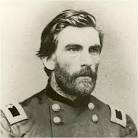
Grenville Mellen Dodge |
birth Grenville Mellen Dodge Born 12 Apr 1831; died 3 Jan 1916 at age 84. American civil engineer who was responsible for much of the railroad construction in the western and southwestern U.S. during the 19th century. Before the Civil War, he did railroad work in the West. During the war, with the Union forces, his skill in rapidly rebuilding the bridges and railroads destroyed by Confederates was of great value to Grant and Sherman in their Western campaigns. He became a Union general. He was severely wounded at the siege of Atlanta. After campaigning (1865-66) against the Native Americans, he left the army (May 1866). Then as chief engineer of the Union Pacific Railroad, his efficient, rapid construction of that line was his greatest achievement. Dodge was a Republican Congressman from Iowa (1867-69). |
|
12 Apr 1831

Broughton Suspension Bridge |
Broughton Suspension Bridge (technology) Broughton Suspension Bridge over the River Irwell in England collapses under marching troops. |
|
12 Apr 1833

Fire-proof safe |
Fire-proof safe In 1833, the first U.S. patent for a fireproof safe was issued to Charles A. Gaylor of New York City, as a “fire-proof iron chest.” He made it from two chests, one within the other, with a space between to “inclose air of any non-conductor of heat.” Gaylor called his product the Salamander Safe, after the mythical salamander, an animal having the power to endure fire without harm. |
|
12 Apr 1838

John Shaw Billings |
birth John Shaw Billings Born 12 Apr 1838; died 11 Mar 1913 at age 74. American surgeon and librarian whose organization of U.S. medical institutions played a central role in the modernization of hospital care and the maintenance of public health. During the Civil War, in the battles of Chancellorsville and Gettysburg, he performed many operations and was the first surgeon in the war to attempt, with success, excision of the ankle joint. He was profoundly interested in advancing knowledge by creating libraries, including the New York Public Library, to improve access to books. Billings also had ideas about hospital architectural design. He planned the new Johns Hopkins Hospital in Baltimore with ventilation systems that reflected the best contemporary understanding of industrial hygiene. |
|
12 Apr 1839
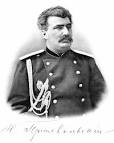
Nikolay Mikhayovich Przhevalsky |
birth Nikolay Mikhayovich Przhevalsky Born 12 Apr 1839; died 1 Nov 1888 at age 49. Russian explorer. |
|
12 Apr 1839

Nikolai Przhevalsky |
birth Nikolai Przhevalsky Nikolai Przhevalsky (died 1888), Russian-born Polish explorer. |
|
12 Apr 1849

Albert Heim |
birth Albert Heim Born 12 Apr 1849; died 31 Aug 1937 at age 88. Swiss geologist whose studies of the Swiss Alps greatly advanced knowledge of the dynamics of mountain building and of glacial effects on topography and geology. He studied the formation of overthrusts and nappes in the Alps. He supported the idea of a contracting Earth. He also studied the mechanics of rock deformation, proposing that rocks can deform plastically under pressure and that the same pressure causes metamorphism. After a near-fatal fall in the Alps during which he had a mystical experience, Heim began the first serious study of near-death experiences. Over a period of several decades he collected observations and accounts from numerous survivors of serious accidents. Heim first presented these findings at the Swiss Alpine Club in 1892. |
|
12 Apr 1851

Edward Walter Maunder |
birth Edward Walter Maunder Born 12 Apr 1851; died 21 Mar 1928 at age 76. English astronomer who was the first to take the British Civil Service Commission examination for the post of photographic and spectroscopic assistant at the Royal Observatory, Greenwich. For the next forty years that he worked there, he made extensive measurements of sunspots. Checking historical records, he found a period from 1645 to 1715 that had a remarkable lack of reports on sunspots. Although he might have questioned the accuracy of the reporting, he instead attributed the shortage of report to an actual dearth of sunspots during that period. Although his suggestion was not generally accepted at first, accumulating research has since indicated there are indeed decades-long times when the sun has notably few sunspots. These periods are now known as Maunder minima. |
|
12 Apr 1851

E. Walter Maunder |
birth E. Walter Maunder E. Walter Maunder (died 1928), astronomer. |
|
12 Apr 1852

Ferdinand von Lindemann |
birth Ferdinand von Lindemann Born 12 Apr 1852; died 6 Mar 1939 at age 86. Carl Louis Ferdinand von Lindemann was a German mathematician who was the first to prove that is transcendental (it is not a solution of any algebraic equation with rational coefficients). This finally established the insoluble nature of the classical Greek mathematical problem of squaring the circle (constructing a square with the same area as a given circle using ruler and compasses alone.) In 1873, Lindemann visited Hermite in Paris and discussed the methods which Hermite had used in his proof that e, the base of natural logarithms, is transcendental. Following this visit, Lindemann was able to extend Hermite's results to show that was also transcendental (1882). |
|
12 Apr 1853

Sir James Mackenzie |
birth Sir James Mackenzie Born 12 Apr 1853; died 26 Jan 1925 at age 71. Scottish cardiologist, pioneer in the study of cardiac arrhythmias. He was first to make simultaneous records of the arterial and venous pulses to evaluate the condition of the heart, a procedure that laid the foundation for much future research. Mackenzie also drew attention to the question of the heart's capacity for work, paving the way for the study of the energetics of the heart muscle. His work was particularly important in distinguishing atrial fibrillation and in treating this common condition with digitalis. In 1892, he built a machine for detecting and recording physiological activity, such as pulse rate and blood pressure, since known as a polygraph, and later used as a lie detector. |
|
12 Apr 1870

John Stough Bobbs |
death John Stough Bobbs Died 12 Apr 1870 at age 60 (born 28 Dec 1809). American physician who performed the first U.S. gallstone operation in Indianapolis, Indiana, becoming known as "the father of cholecystotomy". The surgery was reported, 19-20 May 1868, to the Indiana State Medical Society of which he was president of the surgery section. Bobbs was a commissioner of the state's first hospital, the Indiana Hospital for the Insane. He was the state's first and most vocal advocate for a medical school, and he was founded the Indiana Medical college in 1869 (which was incorporated into the Indiana University School of Medicine in 1908). Earlier, he had served as state senator (1856-60). He was a civilian brigade surgeon during the Civil War. |
|
12 Apr 1872

Georges Urbain |
birth Georges Urbain Born 12 Apr 1872; died 5 Nov 1938 at age 66. French chemist who first isolated lutetium, the last of the stable rare earths. Between 1895-1912 he worked on the rare earths and performed more than 200,000 fractional distillations in which he separated the elements samarium, europium, gadolinium, terbium, dysprosium and holmium. In 1907, he described a process by which Marignac's ytterbium (1879) could be separated into the two elements, ytterbium (neoytterbium) and lutetium. He named the new element after the Roman era village than stood on the site of Paris, his home town. (It was independently discovered by von Welsbach at about the same time.) Urbain also discovered the law of optimum phosphorescence of binary systems and wrote on isomorphism. |
|
12 Apr 1878

Richard B. Goldschmidt |
birth Richard B. Goldschmidt Born 12 Apr 1878; died 24 Apr 1958 at age 80. Richard Benedikt Goldschmidt was a German-American zoologist who specialized in heredity. He studied the X-chromosomes of butterflies. He produced a theory, now discredited, that there were more decisive factors in inheritance than the qualities of the individual genes. He held that the serial pattern of the chromosomes and the chemical configuration of the chromosome molecule were more important factors. His experiments with the Gypsy Moth revealed that much geographical variation is genetic and not environmental in origin. However, he was able with high temperature to produce phenotypes in fruit flies, and demonstrate an environmental factor could mimic some of the effects of genetic mutation, though not inheritable. |
|
12 Apr 1884

Otto Meyerhof |
birth Otto Meyerhof Born 12 Apr 1884; died 6 Oct 1951 at age 67. Otto Fritz Meyerhof was a German biochemist and corecipient, with Archibald V. Hill, of the 1922 Nobel Prize for Physiology or Medicine for research on the chemical reactions of metabolism in muscle. In 1940 he emigrated to America. Meyerhof demonstrated that the production of lactic acid in muscle tissue, formed as a result of glycogen breakdown, was effected without the consumption of oxygen (i.e., anaerobically). The lactic acid was reconverted to glycogen through oxidation by molecular oxygen, during muscle rest. This line of research was continued by Gustav Embden and Carl and Gerty Cori who worked out in greater detail the steps by which glycogen is converted to lactic acid - the Embden-Meyerhof pathway. |
|
12 Apr 1888

Alfred Nobel's premature obituary |
Alfred Nobel's premature obituary In 1888, a French newspaper mistakenly published an obituary for Albert Nobel, inventor of dynamite, calling him “"a merchant of death.” The mistake was that it was actually Albert's brother, Ludwig Nobel, who had just died (at age 56, due to heart trouble). However, shocked by the newspaper's report, Albert Nobel began to seek a change in public opinion, which led to his decision to establish the Nobel Prizes. |
|
12 Apr 1892

Portable typewriter |
Portable typewriter In 1892, the first U.S. patent for a portable typewriter, the Blickensderfer, was issued to George Blickensderfer of Stamford, Connecticut (No. 472,692). |
|
12 Apr 1896

Karl Humann |
death Karl Humann Died 12 Apr 1896 at age 57 (born 4 Jan 1839). German engineer and archaeologist whose excavation of the ancient Greek city of Pergamum (now Bergama, Tur.) brought to light some of the choicest examples of Hellenistic sculpture and revealed much about Hellenistic city planning. He also excavated the Greek city of Magnesia, another ancient city located in modern Turkey. |
|
12 Apr 1897

Edward Drinker Cope |
death Edward Drinker Cope Died 12 Apr 1897 at age 56 (born 28 Jul 1840). American paleontologist and prolific taxonomist of vertebrate paleontology. He was also active in ichthyology and herpetology. He was an evolutionist, and was one of the founders of the Neo- Lamarckian school of evolutionary thought. This school believed that changes in developmental (embryonic) timing, not natural selection, was the driving force of evolution. Cope thought that groups of species that shared similar developmental patterns could be grouped into more inclusive groups (i.e. genera, families, and so on). He led many natural history surveys in the American West for the precursors of the U.S. Geological Survey, making many important finds on his trips, including dinosaur discoveries in western North America. |
|
12 Apr 1898

Marie Curie’s discoveries announced |
Marie Curie’s discoveries announced In 1898, Marie Curie observed a meeting of the French Academy of Sciences, where one of her teachers, Prof. Gabriel Lippmann announced her discovery of substances much more radioactive than uranium. Working since Dec 1897, she had verified that the radiant activity of various compounds was directly related to the amount of uranium present, whether solid, powdered, or in a wet state. She proposed the radiant activity was an atomic property, for it was independent of physical or chemical state. She announced that in pitchblende and charcolite she had discovered compounds even more active than uranium. (She had not, in fact, found a new element, but was the first to identify thorium’s powerful radioactivity.) |
|
12 Apr 1902

Alfred Cornu |
death Alfred Cornu Alfred Cornu (born 1841), physicist. |
|
12 Apr 1912

Clara Barton |
death Clara Barton Died 12 Apr 1912 at age 90 (born 25 Dec 1821). American nurse who was a nursing pioneer during the American Civil War, and was instrumental in the founding of the American Red Cross. At the outbreak of the Civil War, Barton worked as a U.S. Patent Office clerk and collected provisions and medical supplies for the Union Army. Restless with her limited role and undeterred by War Department regulations and prevailing stereotypes, Barton distributed supplies and tended to the wounded and dying despite life-threatening conditions. She became known as “The Angel of the Battlefield.” Almost singlehandedly she founded the American Red Cross, which has provided comfort in times of crisis since 1882. |
|
12 Apr 1923

Theory of Relativity |
Theory of Relativity In 1923, American scientists studying Einstein's Theory of Relativity found further evidence in support of its correctness. |
|
12 Apr 1924

Peter Safar |
birth Peter Safar Born 12 Apr 1924; died 3 Aug 2003 at age 79. Austrian-American physician whose pioneering "Kiss of Life" procedure of mouth-to-mouth resuscitations is credited with saving countless lives. In the 1960s the technique was combined with new chest compressions, producing what's known today as CPR, or cardio-pulmonary resuscitation. He also helped create the organization that, in 1976, became the World Association for disaster and Emergency Medicine. Although there are ancient references to the apparent use of mouth-to-mouth resuscitation in the Bible, the technique fell out of practice until rediscovered by Safar in the 1950s. Also credited with playing a key role was his colleague, Dr James Elam. Safar survived a Nazi labor camp before emigrating to the U.S. after WW II. |
|
12 Apr 1937

Frank Whittle |
Frank Whittle (technology) Frank Whittle ground-tests the first jet engine designed to power an aircraft, at Rugby, England. |
|
12 Apr 1954

Oppenheimer suspended |
Oppenheimer suspended In 1954, the American Atomic Energy Commission (AEC) began hearings to revoke Robert Oppenheimer's security clearance, thereby severing him from the commission's work. Although he had led the scientists making the atomic bombs during the WW II Manhattan Project, he had been affected by the bombs' death toll and chilling descriptions of radiation sickness. When the Soviet Union detonated an atom bomb in 1949, Edward Teller and Ernest Lawrence lobbied feverishly to develop the hydrogen bomb. Oppenheimer chaired the General Advisory Committee AEC, repudiated the hydrogen bomb as a weapon of “genocide.” In May 1953, when Lewis Strauss accepted the chair of the AEC, he regarded Oppenheimer as a security risk, and wanted him to be dismissed. |
|
12 Apr 1955
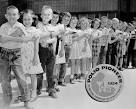
Salk vaccine field trial |
Salk vaccine field trial In 1955, the Salk vaccine against polio was announced to work, and be “safe, effective and potent,” after a year-long field trial. Dr. Thomas Francis, Jr. made the statement at a press conference in Ann Arbor, Michigan, on the tenth annniversary of the death of Franklin Roosevelt (1945), the U.S. president who was a victim of the disease. Dr. Francis was a former professor of Jonas Salk. |
|
12 Apr 1955
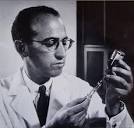
Salk |
Salk (medicine) The Salk polio vaccine, having passed large-scale trials earlier in the United States, receives full approval by the Food and Drug Administration. |
|
12 Apr 1957

German nuclear weapons |
German nuclear weapons In 1957, in Bonn, leading German physicists ceased all work connected with nuclear weapons. |
|
12 Apr 1961

First Earth orbit by man |
First Earth orbit by man In 1961, Yuri Gagarin became the first man to orbit the Earth. His spacecraft, Vostok 1, had radio, television and life-support equipment to relay information on his condition. The flight was automated. Gagarin's controls were locked to prevent him from taking control of the ship, although a key in a sealed envelope was provided in case of an emergency. After e-entry, Gagarin ejected and made a planned descent with his own parachute. However for many years the Soviet Union denied this, because the flight would not have been recognized for various FAI world records unless the pilot had accompanied his craft to a landing. Gagarin died in a plane crash 7 years later. |
|
12 Apr 1961
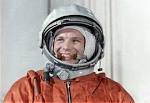
Yuri Gagarin |
Yuri Gagarin (astronomy and space ) Yuri Gagarin is the first human in space. |
|
12 Apr 1963

Kazimierz Ajdukiewicz |
death Kazimierz Ajdukiewicz Died 12 Apr 1963 at age 72 (born 12 Dec 1890). Polish logician and semanticist who was the chief contributor to the Warsaw school of philosophy and logic, and is credited with developing in 1920 the first deductive theory for the study of logic based on syntax. The dominant theme of Ajdukiewicz's thought was the problem of the dependence of our knowledge and conception of knowledge on language. His main contributions are in the field of logical syntax (with the theory of semantical categories) and in epistemology, with the so-called “radical conventionalism,” a doctrine where he claimed that there exist conceptual apparatuses which are not intertranslatable and that scientific knowledge grows through the replacement of one such conceptual apparatus by another. |
|
12 Apr 1963

Alfred Métraux |
death Alfred Métraux Died 12 Apr 1963 at age 60 (born 5 Nov 1902). Swiss anthropologist noted for his pioneering contributions to South American ethnohistory and the examination of African culture in Haiti. While director of the ethnological institute at the University of Tucumán, Argentina, (1928-34) he wrote two classic works on the ethnohistory of the extinct Tupinambá Indians of Brazil. He made an expedition to Easter Island (1934-35), after which he argued that Easter Island's indigenous population is Polynesian, both culturally and physically, and that the island's well-known monolithic sculptures are native creations rather than Asian or American Indian ones. After travelling the Amazon (1947-48) he studied the Haiti island culture (1949-50). He viewed voodoo as a structured, complex religious system with African origins. |
|
12 Apr 1968

Nerve gas accident |
Nerve gas accident In 1968, a sudden outbreak of startling sheep deaths in Skull Valley, Utah, was attributed to a nerve gas sprayed earlier by the Army on the nearby Dugway Proving Grounds. The investigation made by the National Communicable Disease Center was hampered by the Army's initial denial of responsibility and slowness to provide adequate gas samples for independent agencies to check. The debacle led to an overhaul of procedures concerning development of chemical weapons at Dugway. |
|
12 Apr 1971

Igor Yevgenyevich Tamm |
death Igor Yevgenyevich Tamm Died 12 Apr 1971 at age 75 (born 8 Jul 1895). Soviet physicist who shared the 1958 Nobel Prize for Physics with Pavel A. Cherenkov and Ilya M. Frank for his efforts in explaining Cherenkov radiation. Tamm was an outstanding theoretical physicist, after early researches in crystallo-optics, he evolved a method for interpreting the interaction of nuclear particles. Together with I. M. Frank, he developed the theoretical interpretation of the radiation of electrons moving through matter faster than the speed of light (the Cerenkov effect), and the theory of showers in cosmic rays. He has also contributed towards methods for the control of thermonuclear reactions. |
|
12 Apr 1974

Cornelis Simon Meijer |
death Cornelis Simon Meijer Cornelis Simon Meijer, Dutch mathematician (b. 1904) |
|
12 Apr 1975

Henry A. Gleason |
death Henry A. Gleason Died 12 Apr 1975 at age 93 (born 2 Jan 1882). Henry Allan Gleason was an American botanist who was was active with the New York Botanical Garden for 32 years (1918-1950). By age 13, he already was a botany enthusiast. While still in high school, he contributed to The American Naturalist. Early in his career, he travelled to the Philippines, Java and Ceylon to studying tropical vegetation. In 1918, he gave a lecture on his findings, which led to the offer of a permanent position at NYBG, where he developed its South American collection.He was one of the first to consider community ecology. His paper on “The Individualistic Concept of the Plant Association” (1926) concluded that species tended to distribute themselves independently of one another. Eventually, his idea was embraced for the study of vegetation on an ecological and geographical basis. After retirement, he became emeritus head curator. |
|
12 Apr 1981

Space shuttle |
Space shuttle In 1981, the American Space Shuttle Columbia was launched into space, NASA flight STS-1, to become the first of a series of reusable spacecraft. The mission commander was John W. Young with pilot Robert Crippen. |
|
12 Apr 1981

Space Shuttle |
Space Shuttle (space exploration) The first launch of a Space Shuttle: Columbia launches on the STS-1 mission. |
|
12 Apr 1988
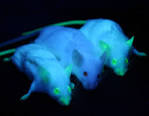
Genetically engineered mouse |
Genetically engineered mouse In 1988, the first U.S. patent was issued on a mammal life form to Harvard scientists Philip Leder and Timothy Stewart for a genetically engineered mouse (No. 4,736,866). The Oncomouse was altered to be highly susceptible to breast cancer. It was called the product of the year by a major financial magazine. Although the patent is owned by Harvard Medical School, because it was developed with funding from DuPont, an earlier commercialization arrangement leaves DuPont entitled to exclusive license of the patent. DuPont has claimed patent protection on any anticancer product ever derived from the mice. The first patent for a life form was issued on 31 Mar 1981 for a genetically engineered bacterium. |
|
12 Apr 1994

Internet spam |
Internet spam In 1994, the first Internet spamming program was used by an attorney in Arizona. Laurence Canter created the software program, a simple Perl script, that flooded Usenet message board readers with a notice for the "Green Card Lottery" to solicit business for his law firm of Canter & Siegel (with wife, Martha Siegel.) The reaction from the online community was vigorously critical, condemning such a form of advertising. Thousands of recipients complained, but a new, burgeoning business of unsolicited mass Internet advertising had been spawned. The term "spam" was coined from a sketch in the "Monty Python's Flying Circus" BBC television show in which a waitress offered a menu full of variations of spam to an unwilling patron. |
|
12 Apr 1997

George Wald |
death George Wald Died 12 Apr 1997 at age 90 (born 18 Nov 1906). American biochemist who shared (with Haldan K. Hartline of the U.S. and Ragnar Granit of Sweden) the 1967 Nobel Prize for Physiology or Medicine for “for their discoveries concerning the primary physiological and chemical visual processes in the eye.” In the early 1930s, in research at Harvard University, he identified that vitamin A was present in the retina of the eye. This was the first discovery of a biological role of a fat-soluble vitamin. Later, Wald expanded Granit’s work on the red, blue and green retinal cones in the eye by establishing the biochemical basis of their sensitivity to different parts of the light spectrum. He was active in political causes such as speaking out against the Vietnam War, nuclear proliferation and the military-industrial complex, and refused to do research on poisonous chemicals for political ends. |